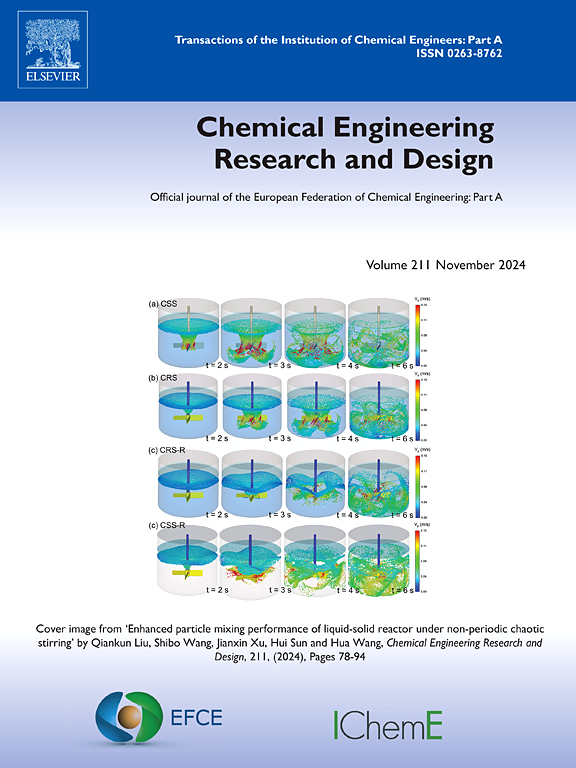Removal of Cr(Ⅵ) by continuous flow electrocoagulation reactor at controlled and uncontrolled initial pH conditions
IF 3.7
3区 工程技术
Q2 ENGINEERING, CHEMICAL
引用次数: 0
Abstract
In this work, we studied the impact of various operating parameters, including reaction time (t), applied current (i), charge loading (q), initial pH, initial Cr concentration (mg/L), and wastewater flow rate (Q), on the removal of Cr (VI) from synthetic tap water. The investigation is conducted using Fe scrap anodes in a continuous flow electrocoagulation process (CFEC) with both controlled and uncontrolled initial pH conditions. Cr(VI) removal efficiency under controlled pH conditions was found to be 100 % under optimum conditions (t = 6 min, i = 1 A, pH = 2.5, q = 6.67 C/L or 4.145 F/m3, Q = 15 mL/min, and Ci = 90 mg/L). In the case of uncontrolled pH conditions at optimum conditions (t = 12 min, i = 1 A, pH = 2.5, q = 13.33 C/L or 8.29 F/m3, Q = 15 mL/min, and Ci = 90 mg/L), the Cr(VI) removal efficiency was found to be 100 %. The Cr(VI) removal capacity and the iron to chromium molar ratio at controlled pH were 775 mg Cr/g Fe and 1.198 mol/mol, and at uncontrolled pH were 387.7 mg Cr/g Fe and 2.395 mol/mol, respectively. Finally, comprehensive investigations were carried out on specific energy consumption and total operating costs. The SEM results show that the sludge particles under controlled and uncontrolled pHs are irregular, characterized by amorphous structure and wrinkled surfaces with small agglomerations.
求助全文
约1分钟内获得全文
求助全文
来源期刊

Chemical Engineering Research & Design
工程技术-工程:化工
CiteScore
6.10
自引率
7.70%
发文量
623
审稿时长
42 days
期刊介绍:
ChERD aims to be the principal international journal for publication of high quality, original papers in chemical engineering.
Papers showing how research results can be used in chemical engineering design, and accounts of experimental or theoretical research work bringing new perspectives to established principles, highlighting unsolved problems or indicating directions for future research, are particularly welcome. Contributions that deal with new developments in plant or processes and that can be given quantitative expression are encouraged. The journal is especially interested in papers that extend the boundaries of traditional chemical engineering.
 求助内容:
求助内容: 应助结果提醒方式:
应助结果提醒方式:


